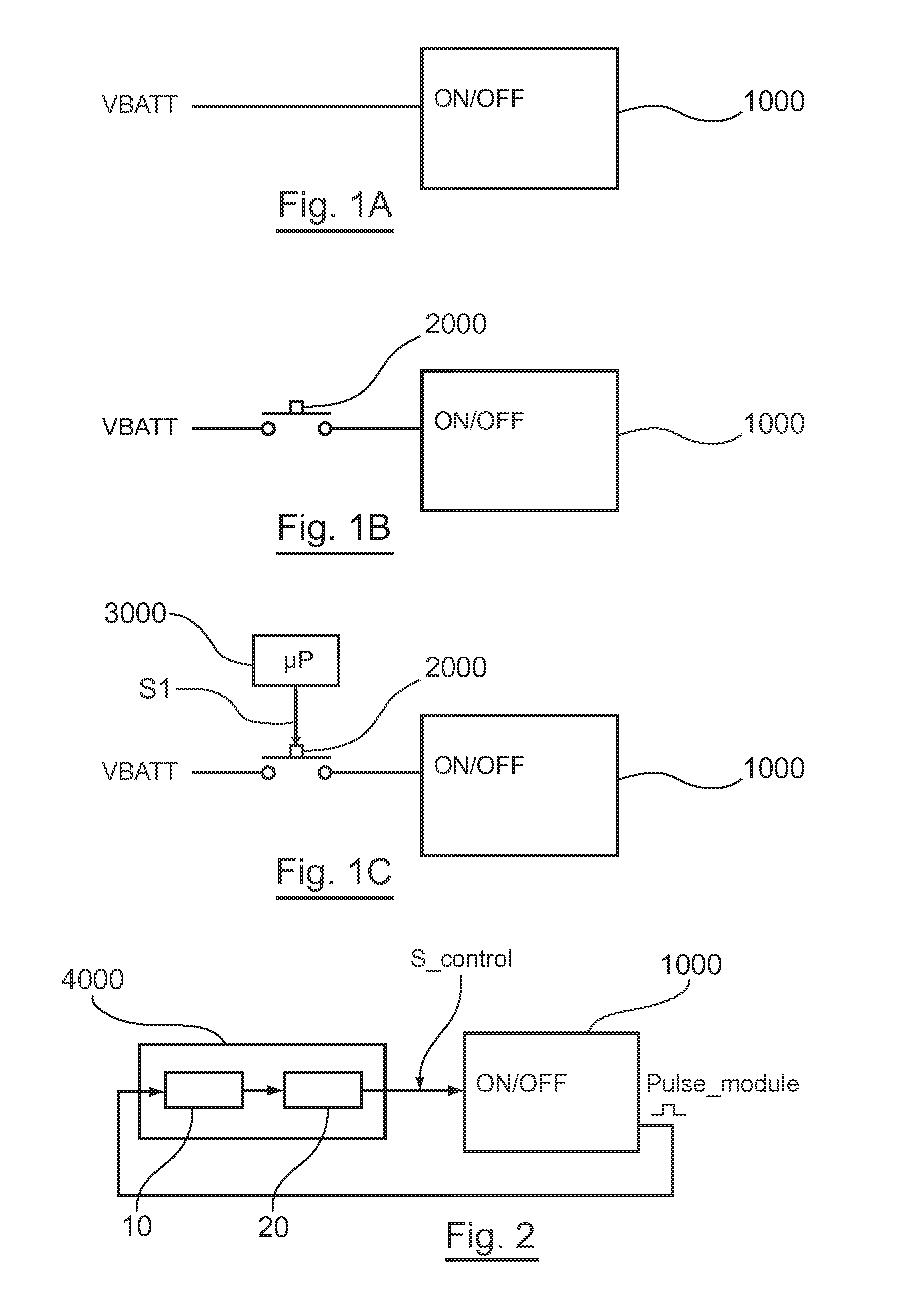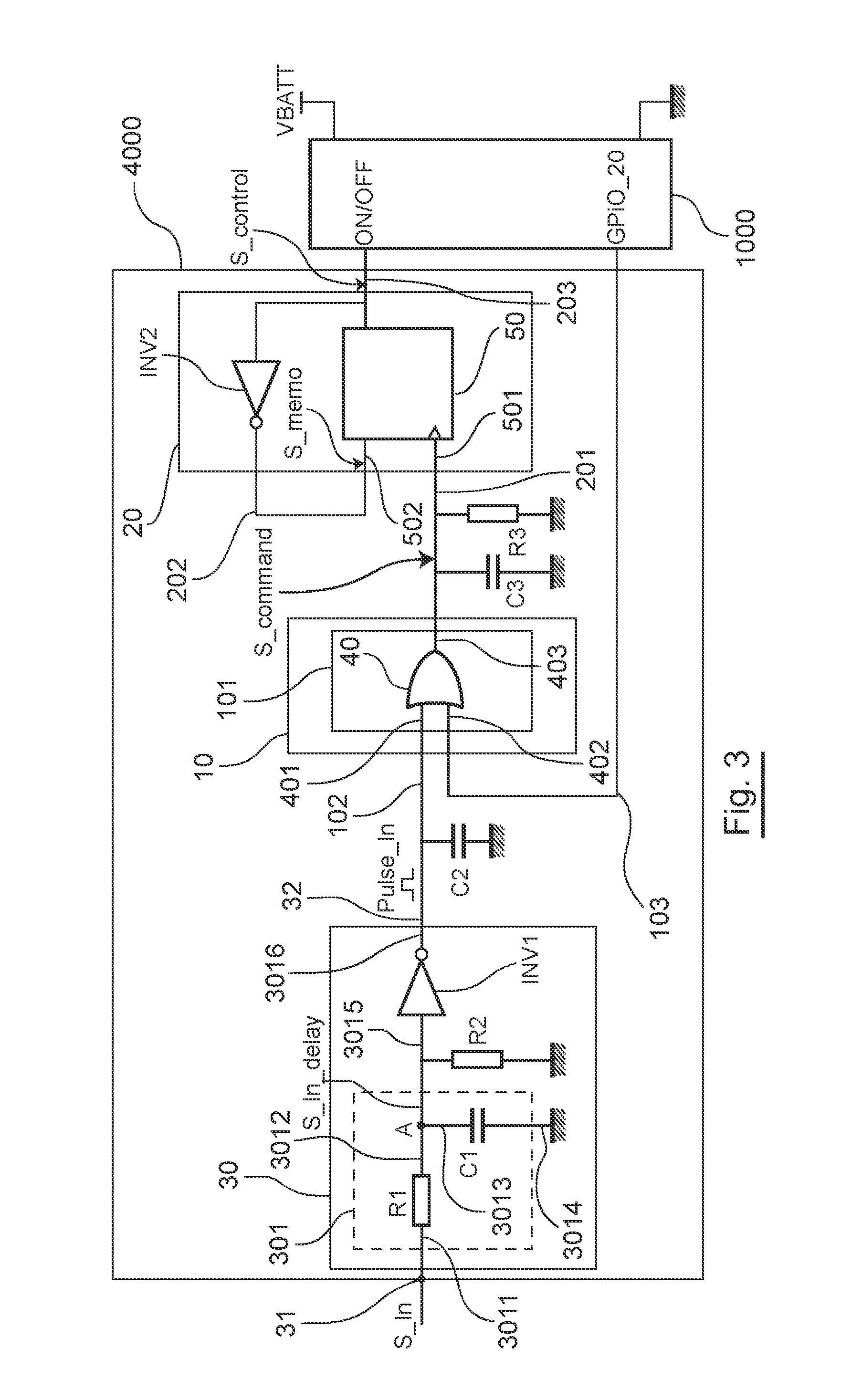Device for controlling the operation of a radiocommunication electronic module, and corresponding electronic circuit
a radiocommunication electronic module and radiocommunication technology, applied in the field of radiocommunications, can solve the problems of low autonomy of radiocommunication devices implementing this first known technique, low power, and low power, and achieve the effect of increasing the rise and fall times of the first signal
- Summary
- Abstract
- Description
- Claims
- Application Information
AI Technical Summary
Benefits of technology
Problems solved by technology
Method used
Image
Examples
Embodiment Construction
[0057]As shown in FIG. 2, the general principle of an embodiment of the invention is based on the generation (by a device for controlling 4000) of a control signal S_control using a signal Pulse_module issued by a radiocommunication module 1000.
[0058]According to an embodiment of the invention, means of controlling 10 receive the signal Pulse_module coming from the module, and where applicable, detect a pulse. These means of controlling 10 make it possible, after a positive detection of a pulse, to activate means for switching 20 making it possible to switch the control signal S_control from a low logic state to a high logic state, or vice versa.
[0059]In relation with the FIG. 3, a device for controlling 4000 according to a particular embodiment of the invention shall now be described.
[0060]In this embodiment, the device for controlling 4000 comprises:[0061]means for generating 30 a first pulse Pulse_In specific to an embodiment of the invention;[0062]means for controlling 10 includ...
PUM
 Login to View More
Login to View More Abstract
Description
Claims
Application Information
 Login to View More
Login to View More - R&D
- Intellectual Property
- Life Sciences
- Materials
- Tech Scout
- Unparalleled Data Quality
- Higher Quality Content
- 60% Fewer Hallucinations
Browse by: Latest US Patents, China's latest patents, Technical Efficacy Thesaurus, Application Domain, Technology Topic, Popular Technical Reports.
© 2025 PatSnap. All rights reserved.Legal|Privacy policy|Modern Slavery Act Transparency Statement|Sitemap|About US| Contact US: help@patsnap.com



